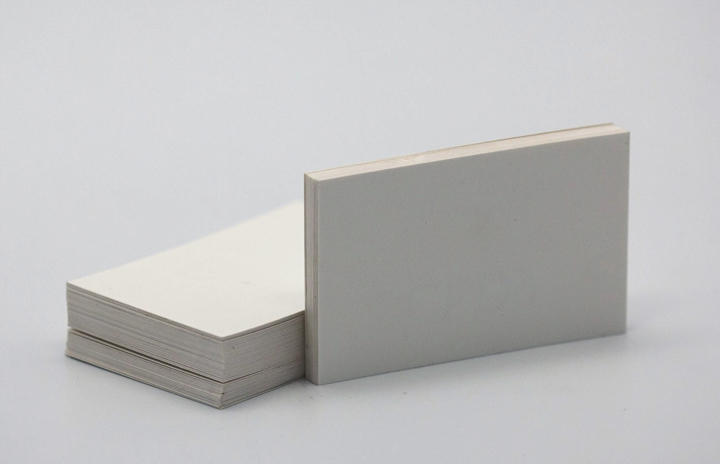So, you’re a talented artist, and you’ve decided to have a go at making art prints at home.
You’ve learned how to make art prints at home. You’ve already researched the best printer for art prints, and now it’s time to get started!
That’s why I’ve put together this simple guide to help you make your own art prints. First, I’ll share some of my favorite types of paper for printed paintings.
So, let’s get stuck in!
The Best Paper for Art Prints: Buying Guide
Not all paper is made the same. Special qualities make certain types of paper great for printing artwork on.
This section will quickly share the factors to look for when choosing the best type of paper. Keep these in mind, and you’re sure to get amazing prints of your work.
Digital vs. Regular Paper
You could print on regular paper, but I wouldn’t recommend it for art prints. Instead, go for a digital paper that is coated to ensure better quality and a more accurate print.
The coating on digital paper creates a crisper result, as it reduces any spreading of the ink. So, you get clear, demarcated prints with bright, vibrant colors.
If you go for digital paper, you shouldn’t have to worry about any discolorations or blurred images.
The coating also holds the pigment on the surface of the paper. In contrast, the ink tends to sink into regular paper and become absorbed into the fibers. As a result, your prints won’t look as vivid or saturated.
But with digital paper, you can feel confident in offering the best product to your customers.
Paper Weight
Paper ranges in weight, which can affect the quality of your prints. So, you need to select the right paperweight to get your desired result.
You should keep in mind what kind of prints you’re producing and even the equipment you have. Not all printers can handle heavier weights of 300+ gsm.
For regular prints or photo prints, you can get away with lightweight paper of around 200 gsm. You don’t need anything special or very expensive.
But if you want to print very detailed and intricate designs, consider sizing up. A heavyweight paper of 300 gsm is best for any prints that need a bit more care.
Heavier paper tends to produce a smoother surface. You’ll also find that details come out sharper and colors are more vibrant.
The heaviest, thickest paper weighs more than 310 gsm. But many regular printers can’t handle such thick paper, so you’ll need something heavy-duty.
It’s only necessary for high-end archival prints selling for premium prices. With paper like this, it will stand up to any scrutiny and rival the prints galleries display.
Acid-Free & Lignin-Free Paper
There are certain substances found in the paper that cause it to break down and discolor over time. When you’re selling premium art prints, you don’t want them to fade in just a few years.
Acid is a corrosive substance that becomes more concentrated in the paper as it ages. That’s what makes it yellow, brittle, and tear more easily.
Lignin is another naturally occurring substance that will affect your paper. So, it’s worth investing in acid-free and lignin-free paper, if possible.
Although it may cost a little more upfront, you won’t regret the investment. You want to keep your customers happy, and that means printing on quality paper. It will stand the test of time and still look great on display ten years down the line.
Price of the Paper Vs. Your Art Prints
Of course, the price is another essential factor that you’ll need to think about.
You should consider both the price of the paper and how much you’ll charge for your art prints. You need to make a good profit on your prints, so it depends on who your customer is.
If you’re selling more affordable prints, then you’ll need to go for a lower-cost paper. Otherwise, you could even end up losing money on your new business venture.
But you may want to produce high-quality archival prints and charge a premium. Some artists limit the number of prints to make them rare and special editions.
In that case, you can afford to spend a bit more to get the best brand of paper.
If you’re charging a high price for your prints, you need to provide a quality to match the price. Otherwise, your customers will be disappointed. And as a result, they’ll be unlikely to recommend you or buy from you again.
So before you buy your paper, you need to have decided on the price of your prints. Then, you can work back from that and calculate how much you can afford to spend on paper.
Cotton Vs. Rag Paper: What’s Better?
You might be confused by the different terms used to describe the paper’s materials. While cotton is fairly well-known, the term rag may be new to you.
It refers to when the paper was literally made from cotton rags. Rags were left over from the textile industry, and rather than waste them, they were turned into paper.
As it turns out, both cotton paper and rag paper are made from cotton. So, what’s the difference?
It all comes down to the length and strength of the fibers. 100% rag paper is made from rag fibers, which are long and sturdy. So, 100% rag paper is the most durable you’ll find out there.
In contrast, 100% cotton paper contains a mixture of rag fibers and cotton linters. The exact percentage varies according to each brand and its manufacturing process.
This second type of cotton is produced when processing cotton. But cotton linter fibers aren’t as long or stable, so the paper can tear more easily.
A Quick Note on Watercolor Paintings & Art Prints
If you plan to reproduce watercolor paintings, they need a bit more attention. Recreating watercolors can be tricky as you risk losing some of the detail and texture.
In that case, I’d recommend going for paper specifically for watercolors. You’ll find that it has a textured surface which makes a huge difference in the result.
Otherwise, you may lose some of the magic of your watercolor art. So, make sure to avoid smooth, shiny paper when it comes to watercolor art prints.
The Best Paper for Prints
Now you know what to look for, and it’s time for the reviews. I’ve handpicked each of these types of paper as they’re excellent for art prints.
There’s something for every budget here, so browse through them. Then, click on the product for more details or to buy it.
And if you’re looking for the best printer/scanner for art prints, check out my recommendations here.
Top 3 Products Roundup
If you’re short on time, here’s a quick roundup of the best paper to print art on:
- If you want an excellent lightweight paper at a reasonable price, go for Epson Velvet. It’s specially designed for fine art, so your paper prints will look outstanding!
- Looking for thick, premium paper for your art prints? Go for the Hahnemuhle 100% rag paper at 308 gsm. It’s gorgeous and sturdy – but pricey!
- If you want the thickest paper out there and you’re watching your budget, the PPD Inkjet paper is for you. It weighs in at 360 gsm, so you’ll struggle to find anything thicker. It’s more affordable than the top brands but still provides great quality.
Epson Velvet Fine Art Paper
Best Fine Art Paper
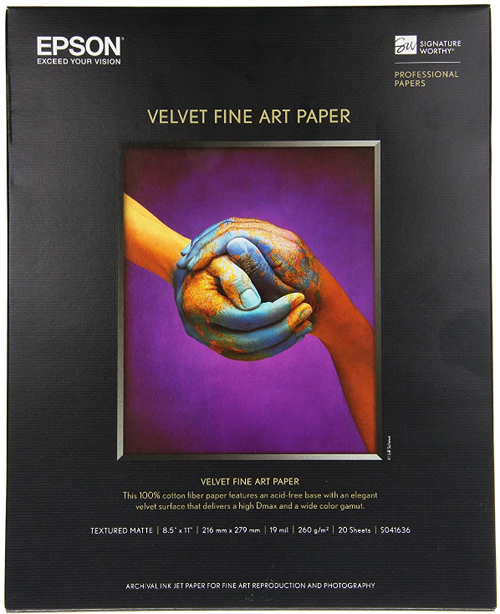
(Image credit: Epson)
Epson Velvet is one of the most versatile, affordable options for printing artwork. But don’t let the reasonable price trick you into underestimating this paper!
It’s gorgeous, made from 100% rag cotton and with a textured matte surface. At 260 gsm, it’s a perfect weight – neither too thin and delicate or unwieldy and thick.
You can use this paper in almost any printer, so there’s no need to invest in any new equipment.
Plus, details come out fine and sharp with realistic color reproduction. So, your prints will look as vibrant and eye-catching as your original artwork.
And as it’s acid-free, this paper should last a long time. So, your prints should look amazing for years (even decades) to come!
This paper has been specially designed for fine art reproductions. That makes it ideal for your art prints – and it won’t set you back too much cash, either.
Pros:
- Fantastic value for money
- Great paper for high-quality images and bright, vibrant colors
- It’s perfect for fine art reproductions with a nice matte texture
- You don’t need a specialist printer for this paper
Cons:
- It’s not as sturdy and durable as thicker paper
Check price on
AmazonCanon Luster Photo Paper Letter
Best Lightweight Paper
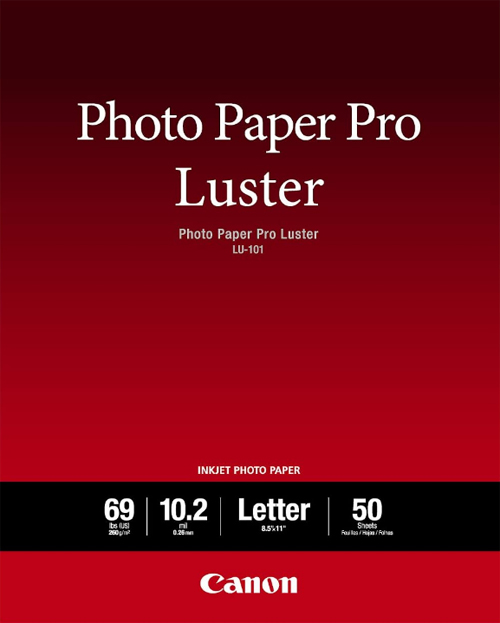
(Image credit: Canon)
Canon Luster Photo Paper is an excellent choice for high-quality prints made at home.
While the name suggests that this paper is for printing photos, it also performs well for art prints.
Your prints can rival anything printed professionally, and you can do it all yourself. There’s no specialist equipment required, either.
This paper weighs in at 225 gsm, making it sturdy yet versatile. You’ll have no trouble using this paper on most regular printers. But it’s also hardwearing and doesn’t rip easily.
In this pack, you get 50 sheets of letter paper, measuring 8.5 x 11 inches.
As for print quality, it’s hard to beat Canon Luster. That’s because this glossy paper is incredibly smooth, with a gorgeous semi-gloss effect.
As a result, details come out sharp. You won’t need to worry about blurring or discoloration. That’s because the smooth surface is perfect for even the most intricate designs.
Your prints will look incredible and suitable to hang on any wall. Colors come out smooth and consistent, while blacks and whites also appear crisp. So, your prints should look vibrant and bright.
One thing to note is that ink dries slowly on this paper. So, you’ll need to take care not to smudge your hard work.
But other than that, you won’t regret choosing Canon Luster. It’s among the best paper for art prints out there!
Pros:
- An excellent lightweight option for art prints
- It has a super-smooth surface and a semi-gloss effect
- Details are sharp with no discoloring or blurring
Cons:
- The ink takes a while to dry
Check price on
AmazonPPD Inkjet Canvas 100% Real Printable Cotton LTR 8.5 x 11 125lbs
Best Budget Paper
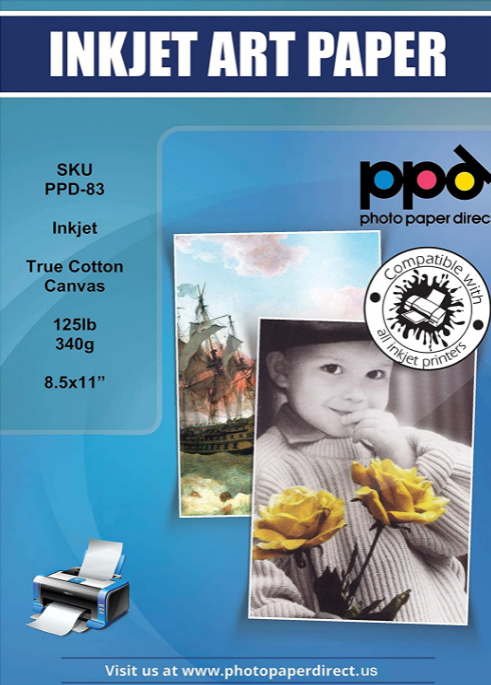
(Image credit: PPD)
When selling your prints, you don’t have to invest in the most expensive paper out there. It might not be good business sense, depending on your target market and prices.
But you still want to make sure you’re buying quality paper, even if it’s at a lower cost! If that sounds like you, then PPD Inkjet Canvas paper is what you need.
This paper is not cheap, low-quality stuff. And while it’s affordable, it will still put you back more than $1 per sheet. But when you compare it to Hahnemuhle, it’s still a bargain!
The PPD Inkjet paper comes in at a weighty 340 gsm. It’s unlikely you’ll find thicker paper than this anywhere – so check if your printer can cope with it.
You might want to consider whether you’ll need such thick paper. But if you have the right printer and want durable prints, you won’t go wrong with this paper.
This paper has a matte texture that’s not too smooth and not too grainy. It has a brilliant white shade, and colors print accurately on this paper. The ink dries instantly to prevent any smudging that could spoil the end result.
It’s coated with a clever coating that ensures the best art reproductions. But it has another benefit too. The ‘easy feed coating allows your printer to process this paper without any issues. So, you won’t need to worry about jams or ink problems.
The PPD inkjet paper is a fantastic alternative to more expensive paper brands. It’s that rare-to-find gem: quality heavyweight paper at a reasonable price.
Pros:
- Super thick, heavy & durable paper
- Ideal for photos and art prints
- Gorgeous matte texture and easy-feed coating for stress-free printing
- Cheaper than many premium brands
Cons:
- Not all printers can handle suck thick paper
Check price on
AmazonHahnemuhle USA Photo Rag 308 GSM 13×19-Inch Paper
Best Premium Paper
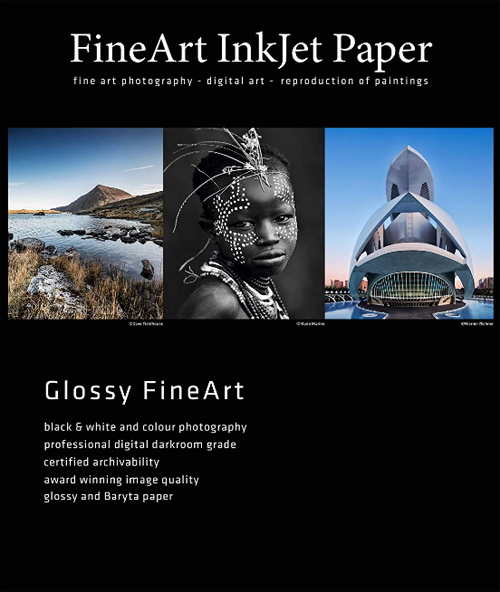
(Image credit: Hahnemuhle)
When it comes to archival quality fine art paper, Hahnemuhle is the industry standard. It’s one of the most well-known brands of paper and popular among artists everywhere.
This high-quality paper does not disappoint. But at 308 gsm, it has considerable heft. That brings both positives and negatives.
Thicker paper tends to produce the most accurate prints. But not every printer can handle such heavy paper, so you’ll need to check if your machine is suitable first.
But back to the paper, there’s a lot to love when it comes to this Hahnemuhle paper. It’s acid-free, which means it’s long-lasting and shouldn’t discolor over time.
Your prints should last for years without any fading. That’s what you want to hear when you’re producing premium prints that you want your customers to cherish for ages.
(Plus, happy customers = better reviews and publicity! They’re more likely to tell their friends and come back for more themselves).
This paper is also 100% rag, making it some of the strongest paper around. And at 13 x 19 inches, these sheets are generously sized – ideal for larger art prints.
But Hahnemuhle paper doesn’t come cheap. So, make sure to do your sums and check that it fits into your budget. And if it does, what are you waiting for? Your artwork will look incredible on this premium paper!
Pros:
- One of the best archival-quality papers around
- Produces premium prints with amazingly accurate details
- It’s 100% rag which makes it strong and durable
- At 13 x 19 inches, this paper is perfect for large art prints
Cons:
- This paper is very expensive
- Not suitable for all printers as it’s very thick
Check price on
AmazonMoab Entrada Rag Bright 300 Paper
Best Affordable Heavyweight Paper
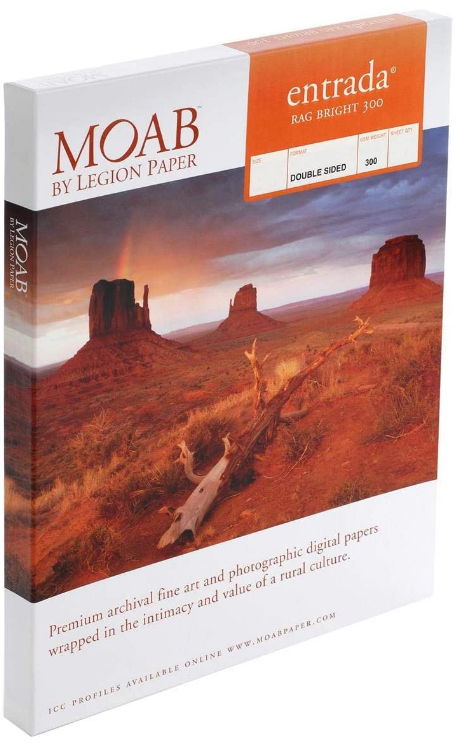
(Image credit: Moab)
Moab is another excellent brand of high-end, heavyweight paper. So, the Entrada rag paper is worth taking a second look at.
It’s also slightly cheaper than Hahnemuhle, making it a good choice for anyone on a tighter budget.
As with Hahnemuhle, this is another 100% rag paper. It feels beautifully thick in your hands, with a nice texture and gentle off-white color. It’s not too bright or muted; the shade is just right.
Moab prides itself on the fact that it’s both acid and lignin-free. Each of these substances reduces the lifespan of the paper and can affect the quality of your prints.
Another benefit of the Moab Entrada paper is the inkjet coating on both sides of the paper. The coating itself ensures an accurate and crisp print, so your artwork will look true to life.
But the double-sided coating is also handy in case you make any mistakes with your printing. You can flip it over and have another go, so you don’t waste any valuable paper.
It’s worth noting that this paper isn’t the most durable or hardwearing around.
If you’re looking for high-quality paper for clean, accurate prints, go for Moab.
You can use both pigment and dye-based inks on this paper with superb results. It’s versatile and perfect for reproducing detailed illustrations or paintings. And your prints will easily rival professional printers (at a fraction of the cost!)
Pros:
- Excellent heavyweight paper
- It’s versatile – you can use it with a range of different inks
- The paper feels quality and has a nice texture
- It produces vibrant colors and crisp details
Cons:
- Slightly more affordable than other premium brands – but it’s not cheap
Check price on
Amazon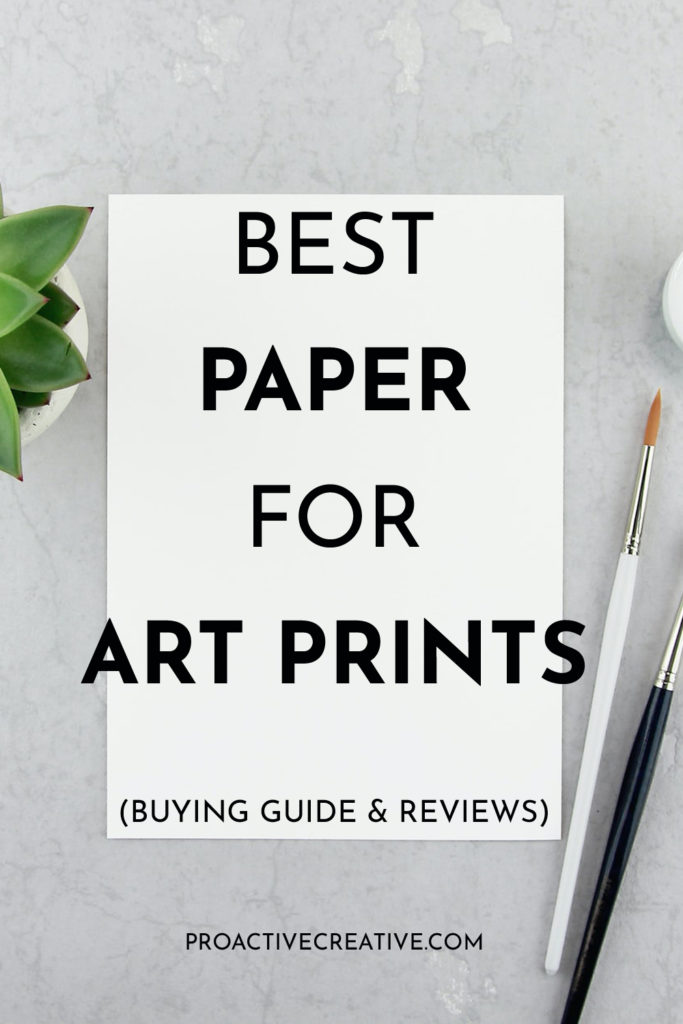
The Wrap Up
Now, you know how to choose the best paper to print art on. Hopefully, you’ve taken your pick from the suggestions above, and you can start to make your own art prints!
Let me know if you found this article helpful. And if you have any questions about how to make prints of your art, drop them below.
You can also check out my detailed guide on how to make prints of your artwork here. Happy printing!
This post contains affiliate links. If you make a purchase, Proactive Creative may receive a small commission at no additional cost to you.

